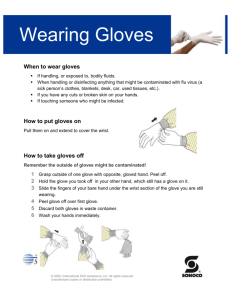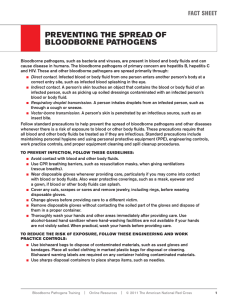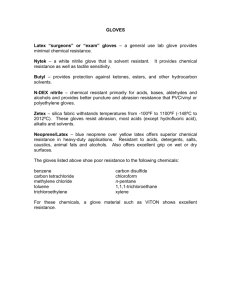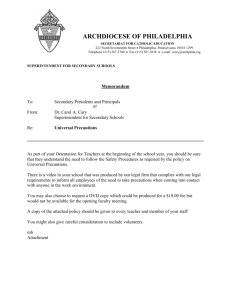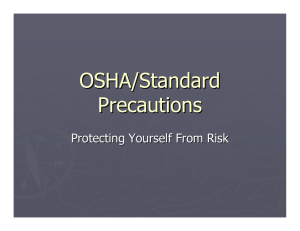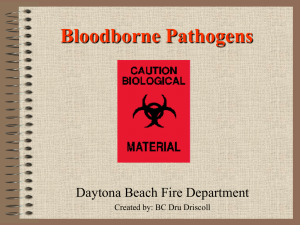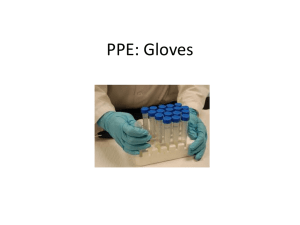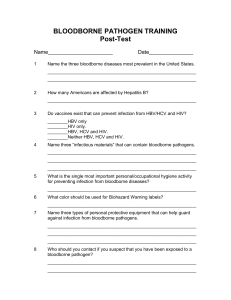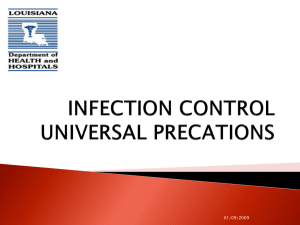K. Safety Precautions
advertisement
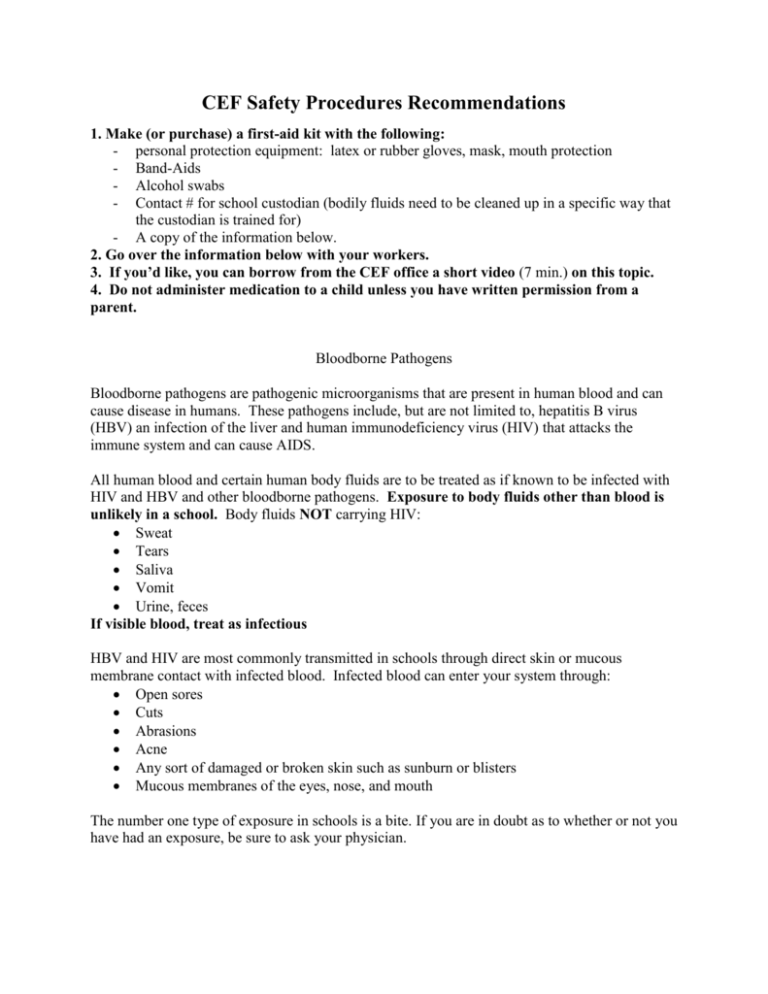
CEF Safety Procedures Recommendations 1. Make (or purchase) a first-aid kit with the following: - personal protection equipment: latex or rubber gloves, mask, mouth protection - Band-Aids - Alcohol swabs - Contact # for school custodian (bodily fluids need to be cleaned up in a specific way that the custodian is trained for) - A copy of the information below. 2. Go over the information below with your workers. 3. If you’d like, you can borrow from the CEF office a short video (7 min.) on this topic. 4. Do not administer medication to a child unless you have written permission from a parent. Bloodborne Pathogens Bloodborne pathogens are pathogenic microorganisms that are present in human blood and can cause disease in humans. These pathogens include, but are not limited to, hepatitis B virus (HBV) an infection of the liver and human immunodeficiency virus (HIV) that attacks the immune system and can cause AIDS. All human blood and certain human body fluids are to be treated as if known to be infected with HIV and HBV and other bloodborne pathogens. Exposure to body fluids other than blood is unlikely in a school. Body fluids NOT carrying HIV: Sweat Tears Saliva Vomit Urine, feces If visible blood, treat as infectious HBV and HIV are most commonly transmitted in schools through direct skin or mucous membrane contact with infected blood. Infected blood can enter your system through: Open sores Cuts Abrasions Acne Any sort of damaged or broken skin such as sunburn or blisters Mucous membranes of the eyes, nose, and mouth The number one type of exposure in schools is a bite. If you are in doubt as to whether or not you have had an exposure, be sure to ask your physician. Universal Precautions Universal precautions are practices and procedures that assist in the prevention of contact with blood and other body fluids. They are the best protection against HBV, HIV, and other infectious agents. Universal precautions provide the first line of defense against the risks of exposure to bloodborne pathogens. When an exposure potentially exists, use personal protective equipment, such as vinyl gloves, mask, and goggles. Disposable vinyl gloves: Used for first aid, clean up, handling of sharp items, and when in contact with any blood or other potentially infectious materials. Before putting on gloves, first wash your hands. After you have put on the gloves, check for proper fit and punctures. Gloves should fit snugly. To remove gloves, place a finger of one gloved hand on the wrist of the other gloved hand. Peel the glove from the wrist to the fingers so that the glove is inside out. Place the inside-out glove in the palm of the gloved hand. Peel the remaining glove in the same manner (from wrist to fingers) while enfolding the first glove into this one. Following these practices minimizes contamination. Gloves should be disposed of immediately and never reused. Wash your hands again after disposing the gloves. Gloves with holes or tears should not be used. Hand washing: 1. Use warm water only—not hot, not cold. 2. Wet both hands and wrists well before applying soap. 3. Apply liquid soap to palms first (about 1 tsp.) 4. Lather well; spread lather to back of hands and wrists. 5. Continue scrubbing, paying careful attention to fingernails and between fingers. The scrubbing time should be a minimum of 20 seconds. 6. Rinse hands and wrists well to remove all soap and detergent. 7. Dry completely. 8. Turnoff faucet using disposable towels to avoid recontamination of clean hands. Additional Safety Precautions: 1. Volunteers are asked to physically cover all exposed skin lesions, abrasions or cuts to protect themselves and others from potential bloodborne pathogens exposure. 2. Use tongs, dustpan or broom to pick up blood covered broken glass. 3. Contact a custodian or school personnel to clean up a situation involving blood or disposal of waste products, such as bloody rags and towels. All of the above material was copied from a training module available on the web. March, 2008
